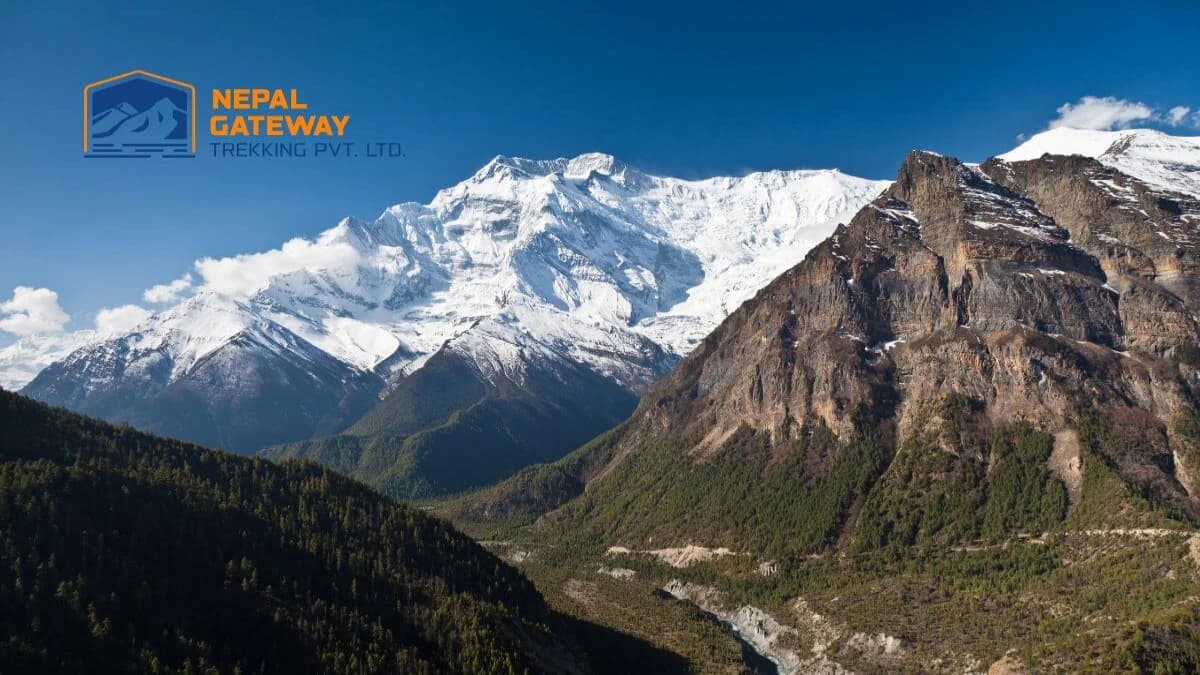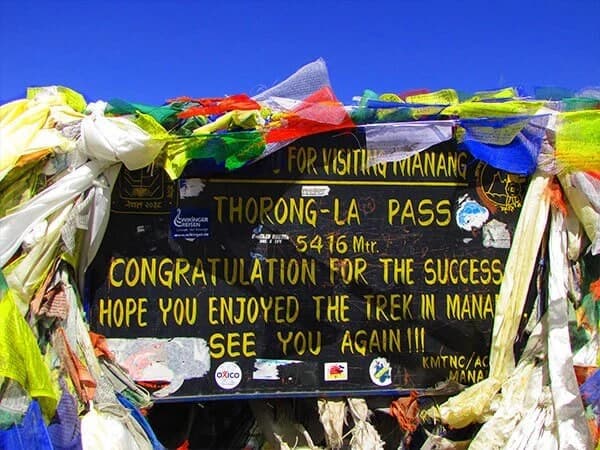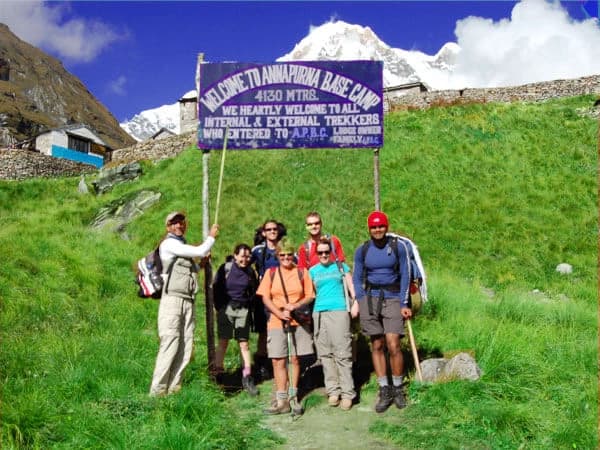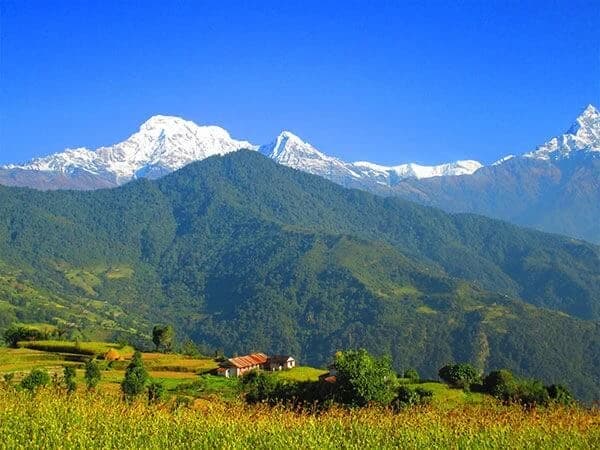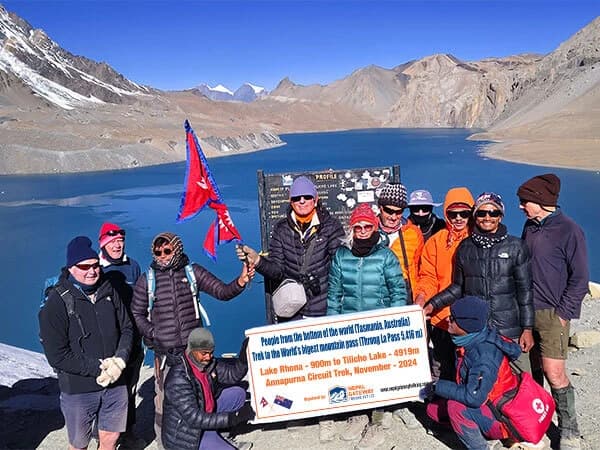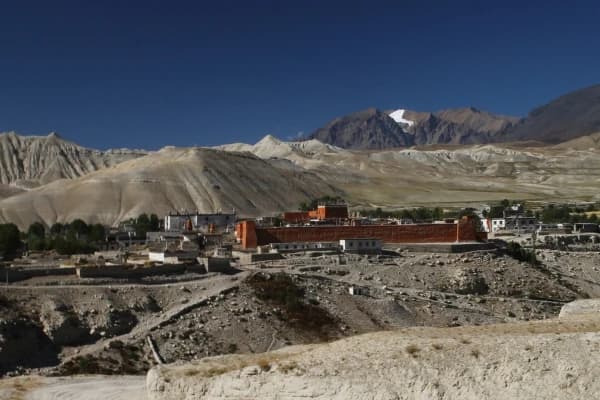Do you ever feel stuck in the routine of daily life, like you're craving something epic, something unforgettable? The kind of adventure that makes your heart race and your soul feel alive? We get it.
Many dream about exploring the vast and stunning Annapurna Himalaya but feel overwhelmed by questions: What are the best routes? When should you go? Is it too hard? What permits do you need?
You're not alone—and we've got great news. With the proper guidance, the Annapurna trek can be your next big journey. Whether you're a beginner or an experienced trekker, this guide will help you plan your trek with confidence and make it a life-changing experience.
Let's explore everything you need to know about the Annapurna Himalaya, from Annapurna trekking routes and difficulty levels to trekking permits and the best seasons to visit Nepal.

Where is Annapurna Himalaya Located?
Annapurna himalaya, also known as Annapurna massif is located in the north-central Himalayas of Nepal. It is renowned for its dramatic peaks and alpine beauty. It includes one peak over 8,000 meters (26,247 ft), thirteen peaks over 7,000 meters (22,966 ft), and sixteen additional peaks exceeding 6,000 meters (19,685 ft), making it a major highlight of the Himalayan landscape.
The Annapurna Himalaya is more than just a mountain range; it's a world of culture, adventure, and stunning landscapes. This region of central Nepal is well-known for its incredible mountains, including the 8,091-meter-tall Annapurna I.
It is part of the Greater Himalayas and is well-known for offering some of the best trekking experiences in the world.
When you think about Annapurna trekking routes, think of snow-capped peaks, lush forests, charming villages, and welcoming locals. This region is like a real-life fantasy world where every step brings a new view, a new moment, and a new story.
Map of Annapurna I in Google Maps
Things to Know About Annapurna Massif
The Annapurna Massif is a prominent mountain range in the Himalayas, located in north-central Nepal. Here are key points about it:
- Geography: It spans 55 kilometers with Annapurna I being the highest peak at 8,091 meters.
- Climbing History: Annapurna I was the first 8,000-meter peak to be climbed in 1950, but it's also considered one of the most dangerous to ascend due to its high fatality rate.
- Trekking: The massif is renowned for trekking routes like the Annapurna Circuit and Annapurna Sanctuary, offering diverse landscapes and cultural experiences.
- Conservation: Portions of the region are protected under the Annapurna Conservation Area Project (ACAP), promoting sustainable tourism and preserving biodiversity.
- Cultural Significance: The area is culturally rich with Gurung and Thakali communities, known for their hospitality and unique traditions.
Why Trek the Annapurna Himalaya?
Trekking in the Annapurna Himalaya is more than a physical journey—it's a sit-in experience that stays with you long after the trek ends. The region offers a perfect blend of natural wonders, cultural encounters, and personal transformation.
Whether you're a first-time trekker or an experienced hiker, the Annapurna region offers something extraordinary for everyone.
What You'll Experience
1. Natural Beauty Like Nowhere Else
Get ready to walk through a dream. In the heart of the Annapurna Massif, you'll cross high mountain passes, wander through deep valleys, and stroll under blooming rhododendron canopies. Around every bend, the view is pure magic—snowy peaks, layered green terraces, and rivers so clear they sparkle.
2. Warm, Welcoming Cultures
Discover more about the Gurung and Magar people, who are renowned for their customs and hospitality. Stay at cozy, friendly teahouses, take in vibrant festivals, and share tales over homemade meals.
3. A Feeling of Individual Success
There is a profound sense of achievement when one crosses Thorong La Pass or arrives at Annapurna Base Camp. The challenges along the way make the views—and the memories—even more rewarding.
Trekking in the Annapurna Himalayas isn't a trip; it's a life-changing journey. Let Nepal Gateway Trekking guide you through the magic of the mountains. Your unforgettable adventure starts here.
Annapurna Trekking Routes: Choose Your Path
The Annapurna Himalayas are home to some of the most stunning trekking trails on the planet. There is a route for everyone, whether you're looking for a quick, picturesque escape or a lengthy, daring adventure. Every path offers a different and remarkable experience, from picturesque mountain communities to breathtaking high passes.
Annapurna Base Camp Trek (ABC Trek)
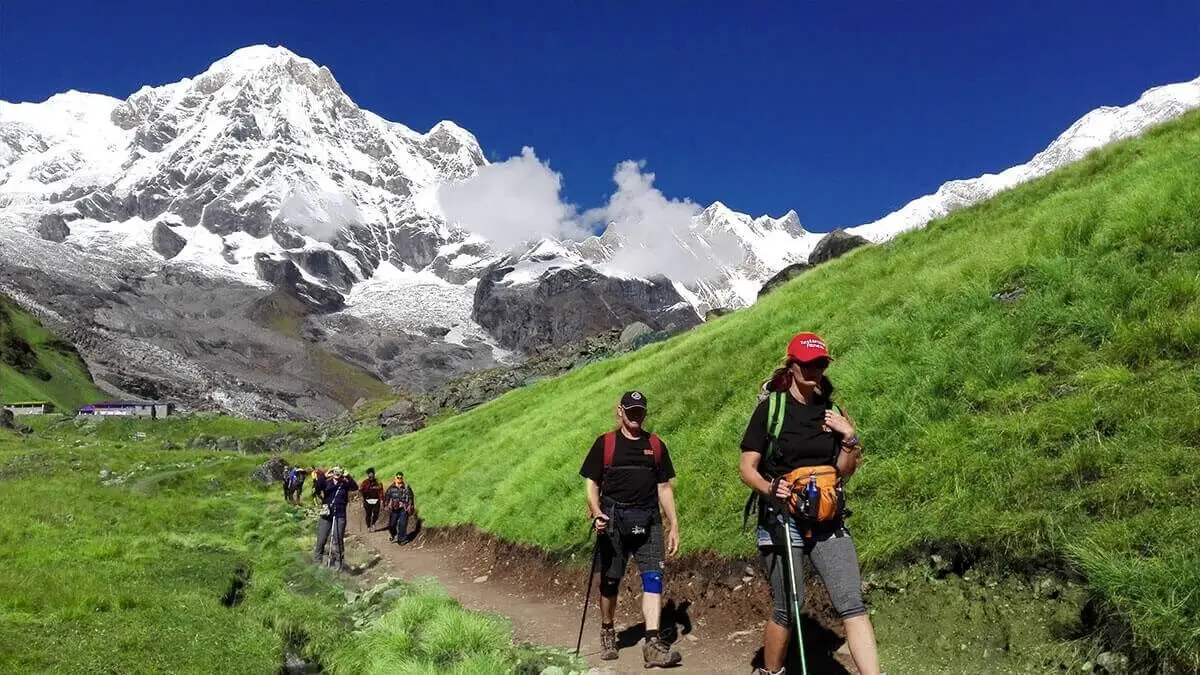
This is a classic trek that leads you to the base of the Annapurna. The Annapurna Base Camp Trek route is a favorite for good reason—it’s a complete package. This trek takes you straight into the heart of the Annapurna Sanctuary, surrounded by towering peaks like Annapurna I, Machapuchare (Fishtail), and Hiunchuli.
It’s a relatively moderate trail, perfect for first-time Himalayan trekkers who want a little bit of everything—lush jungles, stone villages, roaring rivers, and finally, that awe-inspiring glacier basin.
- Duration: 7–12 days
- Best for: Beginners to intermediate trekkers
- Highlights: Annapurna Sanctuary, natural hot springs at Jhinu Danda, cultural villages
If you're dreaming of snow peaks, warm meals, and soulful hiking, this trek is calling your name.
Also if you are wondering about Best Nepal Treks: The Most Popular and Picked Treks in Nepal, Click here to learn about it.
Annapurna Circuit Trek

One of the most famous long-distance treks, the Annapurna Circuit Trek, circles the Annapurna Himalaya and reveals its diverse geography and culture. You’ll start in the lush lowlands and gradually rise to the windswept plains of Manang and the snow-covered Thorong La Pass at 5,416 meters. Expect to witness drastic scenery shifts—from rice paddies and pine forests to high-altitude deserts that feel almost otherworldly.
- Duration: 14–21 days
- Best for: Intermediate to advanced trekkers
- Highlights: Thorong La Pass, dramatic scenery changes, ancient monasteries
Plus, side trips to Tilicho Lake or the hot springs at Tatopani can be added to make your journey even more rewarding. This trek is a rite of passage for serious trekkers—and one you’ll remember for life.
Also read our blog, Annapurna Circuit Trek Distance Guide
Shorter Trekking Options
Short on time but still craving Himalayan vibes? No worries—the Annapurna region offers fantastic shorter treks that deliver massive experiences in just a few days. Two standout options are the Ghorepani Poonhill Trek and the Mardi Himal Trek. Both are ideal for beginners or those with a tight schedule but still want that high-altitude thrill and cultural touch.
- Ghorepani Poonhill Trek: Renowned for sunrise views over the Annapurna and Dhaulagiri ranges
- Mardi Himal Trek: A less crowded trail with panoramic ridge walks
Both treks are doable year-round and don’t require high-altitude experience. They’re the perfect appetizer if you’re new to trekking or just want a quick escape into the mountains.
Not sure which Annapurna trekking route is the right fit for you? Nepal Gateway Trekking can help you plan the perfect journey based on your goals and schedule. Contact us today to start your Annapurna Himalaya adventure.
Best Time to Trek Annapurna
The best times to trek in Annapurna are during spring (March to May) and autumn (September to November). During these months, the skies are clear, and the weather is ideal for trekking.
- Spring: In spring, nature wakes up in full bloom—rhododendrons blanket the hills in shades of red and pink, and the air is warm and fragrant. It’s a lovely time if you love flowers, vibrant landscapes, and mild weather.
- Autumn: Autumn is all about those clear, postcard-perfect mountain views. After the monsoon washes everything clean, you get crisp air, dry trails, and breathtaking panoramas almost every day.
Avoid monsoon (June to August) unless you’re okay with heavy rain, slippery trails, and leeches (yep, they’re real). Winter (December to February) is another off-season time—although it’s dry, it can be bitterly cold, especially above 3,000 meters. Many high passes might be closed due to snow.
So, if you want comfort, views, and safe trails, stick to the golden windows of spring and autumn. Nepal Gateway Trekking can help you plan around these seasons, so your trek is smooth, scenic, and unforgettable.
Difficulty of the Annapurna Trek
The Annapurna Himalaya welcomes all kinds of adventurers—from first-time trekkers to seasoned hikers. The route you take, your level of fitness, and your preparation all affect the challenge of the Annapurna trip. While some paths are short and easy, others call for mental toughness, endurance, and patience.
The best thing, though? Everybody can find their way.
Factors That Affect Difficulty:
The Annapurna Himalaya is open to everyone, whether it's your very first trek or your tenth. How challenging it feels depends on the route you choose, your fitness level, and your preparation. Some trails are relaxed and beginner-friendly, while others will push your limits in the best way. The good news? There's always a path. There's your pace.
1. Altitude: The Annapurna region is home to numerous treks that reach altitudes of above 3,000 meters. The oxygen level decreases as you ascend higher, and altitude sickness may become an issue. Acclimatization days and a steady pace are, therefore, crucial.
2. Length: Beginners should aim for shorter hikes, such as Ghorepani Poonhill (4–5 days). The Annapurna Circuit Trek, which lasts 14–21 days, is lengthier and features high passes like Thorong La, which is 5,416 meters high, as well as severe climbs.
3. Weather: Trekking in the monsoon season can make trails slippery, and winter adds snow and cold temperatures. The best times to trek in Annapurna are during spring (March-May) and autumn (September–November), when the weather is stable.
4. Trail Conditions & Facilities: While some trails are more isolated and rocky, others are well-maintained, with teahouses and marked signs. Having a trustworthy guide and knowing your route can make all the difference.
Permits for Annapurna Trekking
Before you hit the trails of the Annapurna Himalaya, there's a bit of red tape to tackle—but don’t worry, it's all part of the adventure. To legally trek in this region, you’ll need two essential permits:
- Card (Trekkers' Information Management System)
- ACAP (Annapurna Conservation Area Permit)
The TIMS Card helps track trekkers for safety purposes. It’s your official record that you’re on the trail. The ACAP supports conservation efforts and sustainable tourism in the Annapurna region. These funds are used to maintain trails, support local communities, and protect the environment.
You can get these permits in Kathmandu or Pokhara. Let Nepal Gateway Trekking handle all permit arrangements for you, so you don't have to worry about anything.
Tips For Trekking the Annapurna Himalaya
Trekking in the Annapurna Himalaya is exciting, but a little preparation goes a long way. Whether it’s your first trek or your fifth, these handy tips will make your journey smoother and more enjoyable.
- Packing: Layers are your best friend. Mornings can be freezing, afternoons warm, and evenings chilly again. Bring a good pair of waterproof hiking boots, thermal clothing, and a warm sleeping bag—especially if you'll be hiking at higher altitudes.
- Food: Local teahouses serve up comforting meals like dal bhat (a combination of rice and lentils), noodles, momos, and hot ginger tea. Meals are simple but hearty—perfect fuel for trekking.
- Health: Acclimatize slowly—don’t rush the trail. Drink lots of water, avoid alcohol at high elevations, and listen to your body. AMS (Acute Mountain Sickness) is real, so respect the altitude.
- Money: Cash is king in the mountains. There are very few, if any, working ATMs on the trails. Carry enough Nepali Rupees for the duration of your trek.
- Culture: Annapurna is rich in culture. Respect local customs—always ask before taking pictures of people or sacred sites, and greet villagers with a warm “Namaste!”
Following this Annapurna region travel guide will help make your trip smoother and more enjoyable.
Summing up
Trekking in the Annapurna Himalaya is more than just a hike—it's a journey through stunning landscapes, vibrant villages, and the heart of Nepalese culture. Every step of either the picturesque Annapurna Base Camp trip or the famous Annapurna Circuit trek offers something new. There is something for every kind of traveler with the variety of trekking paths available.
It's essential to plan. A safe, easy, and memorable journey is ensured by understanding the level of difficulty, the ideal time to trek, and obtaining the required permissions. With the help of an expert Annapurna region travel guide, you'll have every moment without stress.
Ready to begin this incredible Himalayan journey? Contact Nepal Gateway Trekking and let us craft your perfect Annapurna experience. Book your trek today!
Also Read on, Best Six Handpicked Trekking and Climbing Packages in Nepal
FAQ's on Annapurna Himalaya Region Treks
What is the best time to trek in the Annapurna region?
The best time to trek in the Annapurna region is during the spring (March-May) and autumn (September-November) seasons. These months offer stable weather and clear views of the mountains.
Do I need a permit to trek in the Annapurna region?
Yes, you need two primary permits for trekking in the Annapurna region: the Annapurna Conservation Area Permit (ACAP) and the Trekker's Information Management System (TIMS) card.
What is the difficulty level of the Annapurna Base Camp trek?
With moderate climbs and a considerable height increase, the Annapurna Base Camp trek is rated as intermediate to difficult. The adjustment and preparation must be done correctly.
How long does the Annapurna Circuit trek take?
The Annapurna Circuit trek typically takes between 12 and 21 days, depending on your pace and route choices. It includes crossing Thorong La Pass at an altitude of 5,416 meters.
Is the Annapurna Circuit trek suitable for beginners?
The Annapurna Circuit trek is not recommended for absolute beginners due to its challenging terrain and high-altitude passes. It is better suited for trekkers with moderate experience.
Is it safe for solo female travelers to trek in the Annapurna region?
Yes, it's generally safe, especially on popular routes. Hiring a licensed guide through a trusted company, such as Nepal Gateway Trekking, adds extra safety and peace of mind.
Do I need travel insurance for the Annapurna trek?
Yes, travel insurance that covers high-altitude trekking and emergency evacuation (up to 6,000 meters) is strongly recommended.
What should I pack for the Annapurna Base Camp trek?
Essential items for the Annapurna Base Camp trek include a good pair of trekking boots, a sleeping bag, warm clothing, trekking poles, a first-aid kit, and water purification tablets. A detailed packing list can be found in the trek preparation section.
Can I do a solo trek in the Annapurna region?
Trekking solo in the Annapurna region is doable—but it takes good planning. For more challenging routes like the Annapurna Circuit, having a guide or porter can make a big difference. Not only does it boost your safety and help with navigation, but it also opens the door to richer experiences with the locals along the way.
How do I prepare for the Annapurna trek?
It takes more than just using your backpack to get ready for the Annapurna trek; you also need to prepare your body and mind. Increase your level of fitness, familiarize yourself with high altitudes, and understand your itinerary.
Make sure you have all the necessary equipment, and above all, give yourself time to adjust. You will be prepared for the journey ahead, even though altitude sickness is real.
Is Annapurna harder than Everest?
Annapurna is generally considered harder and more dangerous to climb than Mount Everest. Despite Everest being higher, Annapurna’s steep, technical terrain, unpredictable weather, and high avalanche risk make it significantly harder to climb. The mountain also lacks the extensive infrastructure and support systems found on Everest.
Most notably, Annapurna has one of the highest fatality rates among the 8,000 meter peaks, approximately 29%, making it one of the deadliest climbs in the world.
